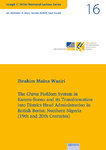Categories ISLAMWISSENSCHAFT Reihe: Ulrich Haarmann Memorial Lecture Volume 20: Custodians of the Holy Sanctuaries: Rasulid-Mamluk Rivalry in Mecca
Volume 20: Custodians of the Holy Sanctuaries: Rasulid-Mamluk Rivalry in Mecca
Product no.: ISBN: 978-3-86893-311-6
In stock
can be shipped within 3 days
9.00 €
Price incl. VAT, plus Shipping
Customers who bought this product also bought
|
|
|
|
|
|
|
* Prices incl. VAT, plus Shipping
Browse this category: Reihe: Ulrich Haarmann Memorial Lecture









































